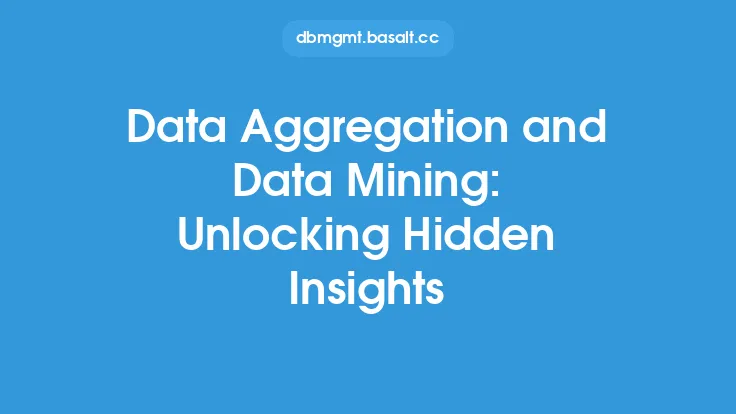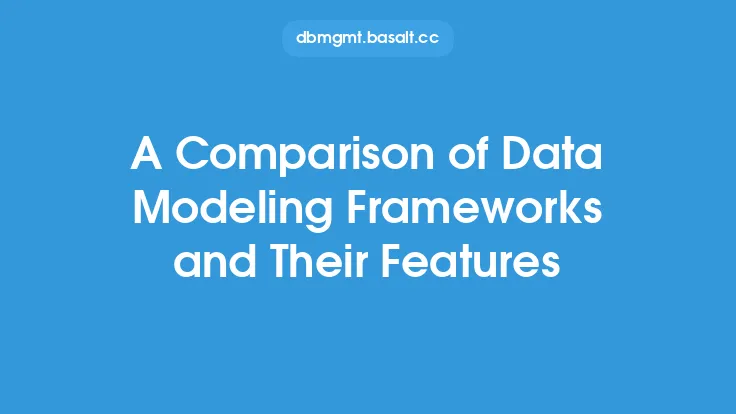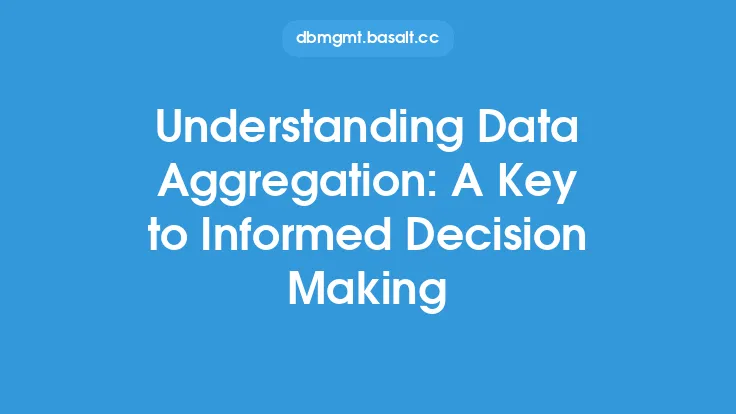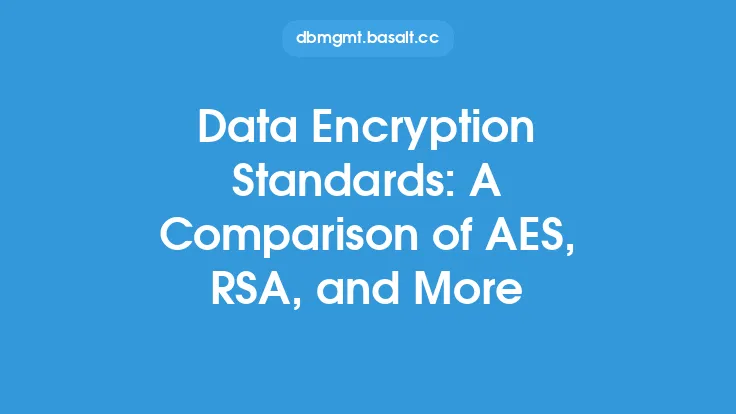Data aggregation is a crucial process in data analysis that involves collecting and summarizing data from multiple sources to provide a comprehensive view of the information. There are several data aggregation methods, including rollup, cube, and grouping sets, each with its own strengths and weaknesses. In this article, we will delve into the details of these methods, exploring their characteristics, advantages, and disadvantages, to help you choose the most suitable method for your data analysis needs.
Introduction to Rollup
The rollup method is a data aggregation technique that allows you to calculate subtotals and totals for a set of data. It is commonly used in hierarchical data, where data is organized in a tree-like structure. The rollup method starts with the most detailed level of data and gradually moves up the hierarchy, calculating subtotals and totals at each level. This method is useful for analyzing data that has a natural hierarchy, such as sales data by region, district, and store. The rollup method provides a flexible way to analyze data at different levels of granularity, making it easier to identify trends and patterns.
Introduction to Cube
The cube method is another data aggregation technique that allows you to calculate subtotals and totals for a set of data. Unlike the rollup method, which is used for hierarchical data, the cube method is used for data that has multiple dimensions. The cube method calculates subtotals and totals for each dimension, as well as for the intersection of multiple dimensions. This method is useful for analyzing data that has multiple categories, such as sales data by region, product, and time period. The cube method provides a powerful way to analyze data from multiple perspectives, making it easier to identify relationships and correlations between different variables.
Introduction to Grouping Sets
The grouping sets method is a data aggregation technique that allows you to calculate subtotals and totals for a set of data based on multiple groupings. Unlike the rollup and cube methods, which are used for hierarchical and multidimensional data, respectively, the grouping sets method is used for data that has multiple groupings. The grouping sets method calculates subtotals and totals for each grouping, as well as for the intersection of multiple groupings. This method is useful for analyzing data that has multiple categories, such as sales data by region, product, and customer segment. The grouping sets method provides a flexible way to analyze data based on different groupings, making it easier to identify trends and patterns.
Comparison of Rollup, Cube, and Grouping Sets
When it comes to choosing a data aggregation method, it's essential to consider the characteristics of your data and the type of analysis you want to perform. Here's a comparison of the rollup, cube, and grouping sets methods:
- Rollup: suitable for hierarchical data, provides flexible analysis at different levels of granularity, and is easy to implement.
- Cube: suitable for multidimensional data, provides powerful analysis from multiple perspectives, and is more complex to implement.
- Grouping sets: suitable for data with multiple groupings, provides flexible analysis based on different groupings, and is more complex to implement.
In general, the rollup method is the simplest to implement, while the cube and grouping sets methods are more complex. However, the cube and grouping sets methods provide more powerful analysis capabilities, making them suitable for more complex data analysis tasks.
Advantages and Disadvantages of Each Method
Each data aggregation method has its advantages and disadvantages. Here's a summary:
- Rollup:
+ Advantages: easy to implement, flexible analysis at different levels of granularity.
+ Disadvantages: limited to hierarchical data, may not provide detailed analysis.
- Cube:
+ Advantages: powerful analysis from multiple perspectives, suitable for multidimensional data.
+ Disadvantages: complex to implement, may require significant computational resources.
- Grouping sets:
+ Advantages: flexible analysis based on different groupings, suitable for data with multiple categories.
+ Disadvantages: complex to implement, may require significant computational resources.
In general, the choice of data aggregation method depends on the characteristics of your data and the type of analysis you want to perform. It's essential to weigh the advantages and disadvantages of each method and choose the one that best fits your needs.
Best Practices for Implementing Data Aggregation Methods
When implementing data aggregation methods, it's essential to follow best practices to ensure accurate and efficient analysis. Here are some tips:
- Choose the right data aggregation method based on the characteristics of your data and the type of analysis you want to perform.
- Ensure that your data is clean and consistent before applying data aggregation methods.
- Use indexing and other optimization techniques to improve the performance of your data aggregation queries.
- Test and validate your data aggregation results to ensure accuracy and reliability.
By following these best practices, you can ensure that your data aggregation methods provide accurate and reliable results, and help you make informed decisions.
Conclusion
Data aggregation methods, including rollup, cube, and grouping sets, are essential techniques for analyzing and summarizing data. Each method has its strengths and weaknesses, and the choice of method depends on the characteristics of your data and the type of analysis you want to perform. By understanding the characteristics of each method and following best practices for implementation, you can ensure accurate and efficient analysis, and make informed decisions based on your data. Whether you're working with hierarchical, multidimensional, or grouped data, there's a data aggregation method that can help you unlock insights and drive business success.





